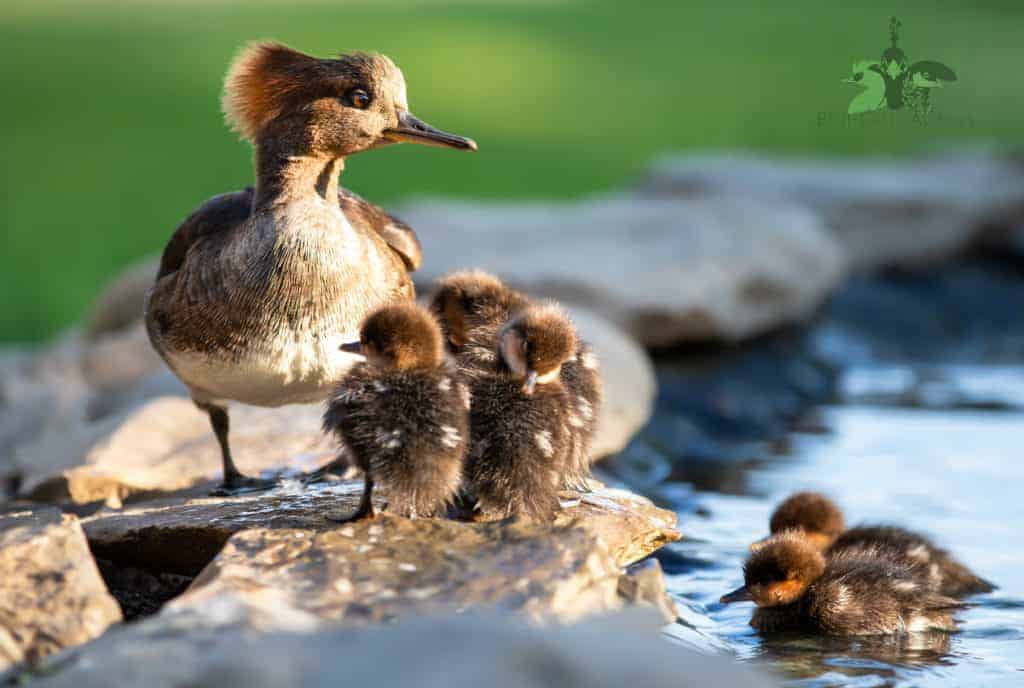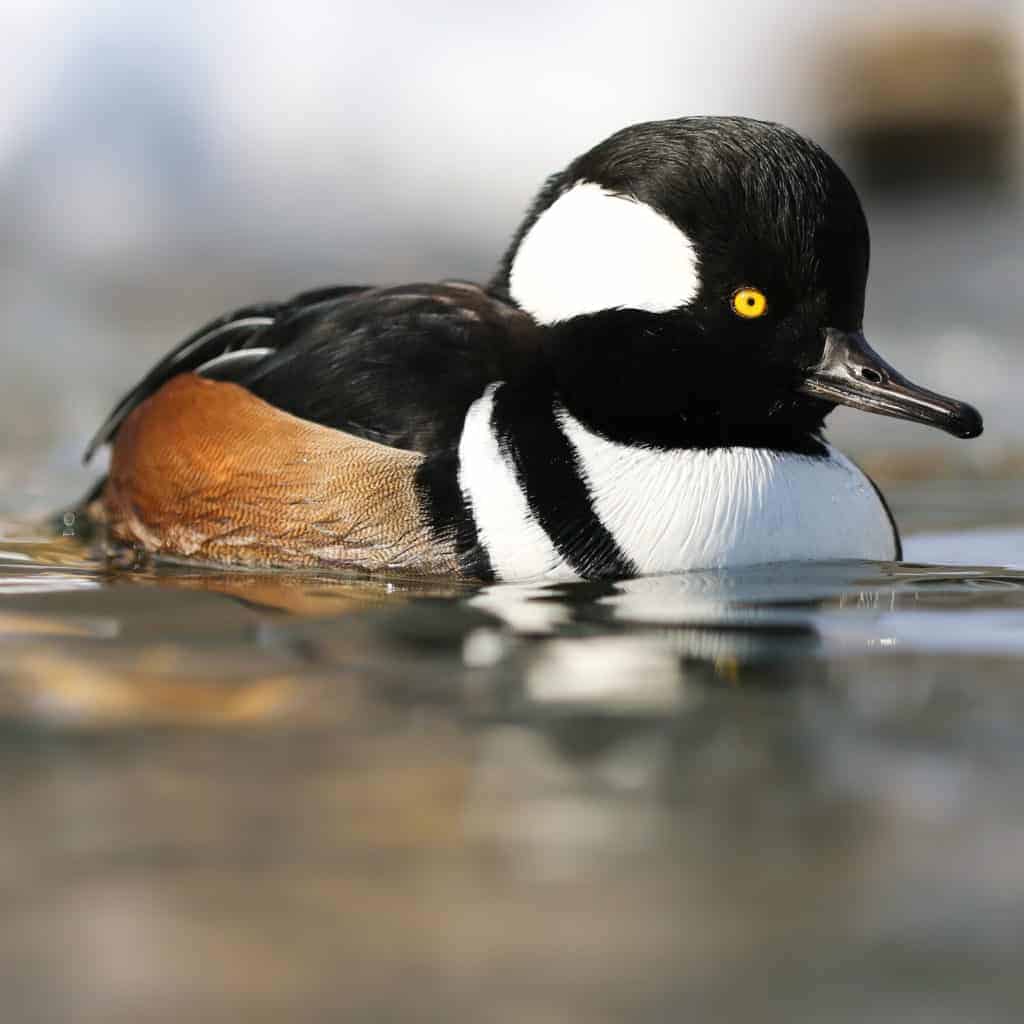Hooded Merganser

Lophodytes cucullatus
The Hooded Merganser is at home on small lakes, pools and fast flowing water, with a marked preference for emergent vegetation. Breeding in North America, it migrates short distances to stay on open water.
Very occasionally, a vagrant appears in the UK. There are always questions as to the validity of records, as this is a commonly kept species in wildfowl collections.
To identify the wild sawbills found in the UK, there is a useful article on Birdguides.

Hooded Mergansers need deep clear water, with ice-free areas maintained in winter. They do well in a mixed collection, but take care that other species are not bullied during the breeding season.
Courting drakes are very handsome, raising a tall crest and shaking vigorously. A group will sometimes display together.
Eggs are laid mainly April to May, and a second clutch may be laid if the first clutch of eggs is removed. Nesting in other species’ nests is not uncommon.
Hooded Mergansers will take to nest boxes or barrels, either on the ground or raised. Sometimes they will nest some distance from the water, but generally they really like boxes over the water. The ideal size for the entrance hole is 8cm. 8–12 white eggs are incubated for 32 to 33 days by the female alone. The drake deserts once incubation starts.
It can be difficult to get hand-reared ducklings to feed – live food such as daphnia, Tubifex worms, or mealworms can be useful to encourage feeding initially. Mashed hard-boiled egg mixed with starter crumbs should become the main food by one week old. These ducklings are very agile and are excellent climbers, so brooding boxes should be covered with wire tops.
Share this page